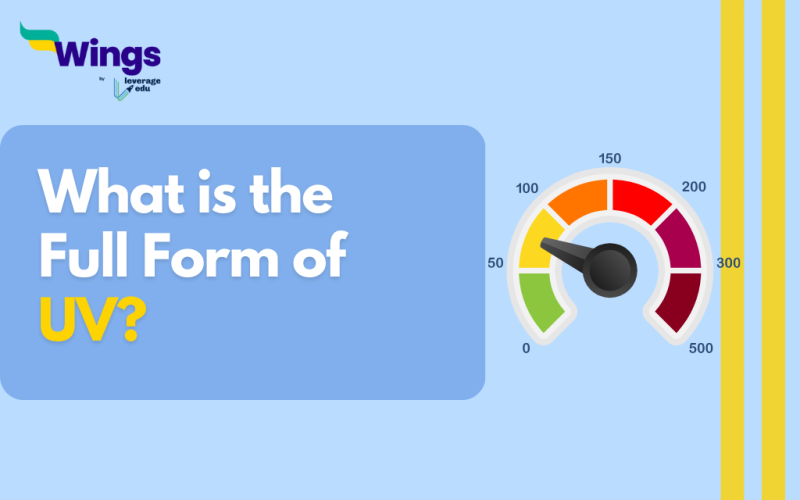The full form of UV is Ultraviolet, which is a form of electromagnetic radiation with wavelengths that are shorter than visible light. UV radiation is invisible to the naked eye, but it can have several effects on living things, both beneficial and harmful. In the blog, we will learn more about the rays and know about their types and effects on us.
Table of Contents
Types of UV radiation
There are three main types of UV radiation:
- UVA is the longest wavelength UV radiation, with wavelengths ranging from 320 to 400 nanometers (nm). It is present in both sunlight and artificial light sources such as tanning beds. They can cause premature aging of the skin and increase the risk of skin cancer.
- UVB is a medium-wavelength UV radiation, with wavelengths ranging from 280 to 320 nm. UVB radiation is the main cause of sunburn and is also linked to skin cancer.
- UVC is the shortest wavelength of UV radiation, with wavelengths ranging from 100 to 280 nm. UVC radiation is not present in sunlight, but it is produced by artificial light sources such as germicidal lamps and welding arcs. UVC radiation can cause severe skin burns, eye damage, and even death.
Also Read – What is the Full Form of OPG X-Ray?
Effects of UV radiation
UV radiation can have some effects on living things, both beneficial and harmful. Some of them are mentioned below –
Beneficial effects:
- Vitamin D production: UV radiation is necessary for the body to produce vitamin D, which is essential for bone health and immune function.
- Sterilization: UV radiation can be used to kill bacteria and viruses, which is why it is used in food processing and water purification.
- Cancer treatment: UV radiation can be used to treat some types of cancer, such as leukemia and lymphoma.
Harmful effects:
- Sunburn
- Skin cancer
- Premature aging
- Eye damage
- Immune system suppression
UV rays can be both beneficial and harmful and it is important and advisable to protect yourself from the rays.

Discovery of Ultraviolet
During the 1800s, Johann Ritter attempted to verify the presence of waves beyond the visible spectrum. Photographic film reacts more to blue light than red light. He used photographic film to expose UV rays and confirmed their existence. Ritter experimented with the film and exposed it to a light beyond violet. As expected, the film changed colour. This confirmed the existence of UV rays.
Use of UV rays
UV lamps are used for various reasons like
- to kill germs
- sterilize medical equipment in hospitals and
- treat water in the pharmaceutical industry.
Popular Full Forms
We hope this blog has helped you understand the full form of UV and everything related to it. If you want to know more, find the 300+ full forms list on our blog. In the world of short forms, you can rely on the Leverage edu page to know about more full forms like this! Connect with us study abroad experts to achieve your international dream today!
 One app for all your study abroad needs
One app for all your study abroad needs













